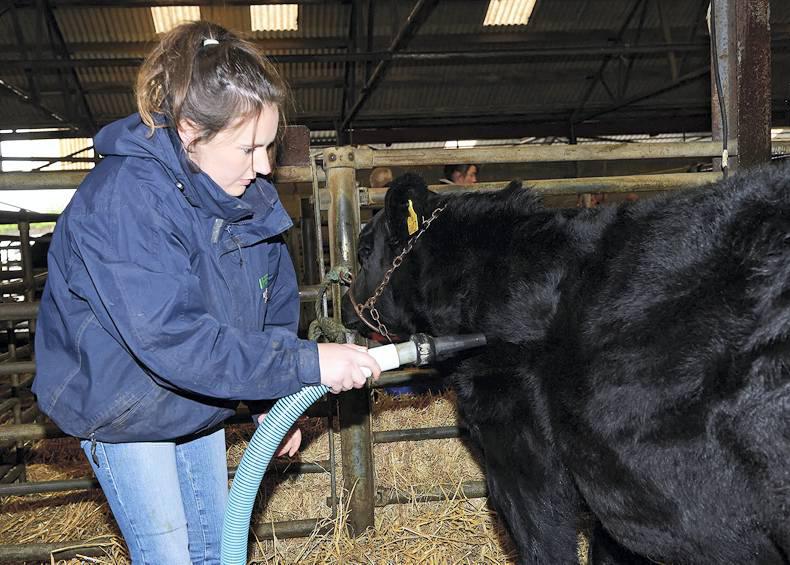Dr Ryan is an internationally recognised leader in bovine reproduction technologies and pregnancies diagnostics. I worked alongside Dr Ryan and his team at CowsDNA for the last two weeks as part of my ongoing work placement for UCD. This meant very early starts, extremely late nights and more cows than I had ever seen in such a short space of time! In one day alone, we scanned almost 900 cows and heifers.
I was trained to use the ScanMan technology that was developed by Dr Ryan and his team of specialists. This piece of equipment is used in conjunction with the Irish Cattle Breeding Federation (ICBF) and allows access to each animal’s individual records, which allows the scanner to make a more informed and accurate pregnancy diagnosis. The ScanMan technology can identify dead embryos, sex the calves from 51 days onwards and diagnose pregnancies as early as 18 days. It can also identify cows that aren’t cycling properly or are having difficulty going in calf. These cows are then diagnosed with a specifically designed programme in order to help the cow become pregnant.
The biggest thing I learned over the two weeks is the relationship between good herd health and fertility. Every single health issue has an effect on fertility, from obvious issues such as lameness and mastitis, to smaller things such as not lying up on cubicles or sickness as a calf. The major theme across the country was the number of dead embryos reported in cows. Once a dead embryo is diagnosed, the cow can be quickly treated and served again in order for her to go in calf as quickly as possible. Without identifying embryonic death the cow wouldn’t show signs of heat for up to six and nine weeks after the death, and can ultimately cost farmers up to €100 for every week the cow is not in calf.
The majority of herds visited were dairy herds and I saw first hand the importance of feeding cows correctly to ensure a sufficient body condition score at time of service. This has a huge impact on fertility levels within the herd. Also, the conditions in which animals are reared and the transition period from dry to lactating are extremely important to the future fertility of the cow in their next calving. I really enjoyed learning about all the factors affecting fertility – some of which I hadn’t previously thought of.
I was always had a keen interest in the whole area of fertility in cattle and this placement really opened my eyes to the complexity of bovine reproduction. We have studied this area in depth in college but nothing compares to seeing cows with reproductive problems first hand. Also, it was particularly interesting to see how fertility levels differed from herd to herd (even if they were in the same area) and amongst the different breeds of cattle. The long hours and the harsh weather were tough at times but the experience was amazing and something I will never forget.
I thoroughly enjoyed my time with Dr Ryan and CowsDNA and it has really given me a better idea as to whether I would like to pursue a career in the world of bovine reproduction and fertility. I now move onto my next stage of placement which takes me to Teagasc Grange, Co Meath. Here I will assist in the various research trials that are taking place and I’m looking forward to getting stuck in.
Susan Dudley is a third year student, currently completely a degree in Agricultural Science in University College Dublin. As part of her studies, she must undertake a number of professional work placements over the course of 20 weeks. Read more of Susan's updates by clicking here.






 This is a subscriber-only article
This is a subscriber-only article










SHARING OPTIONS: